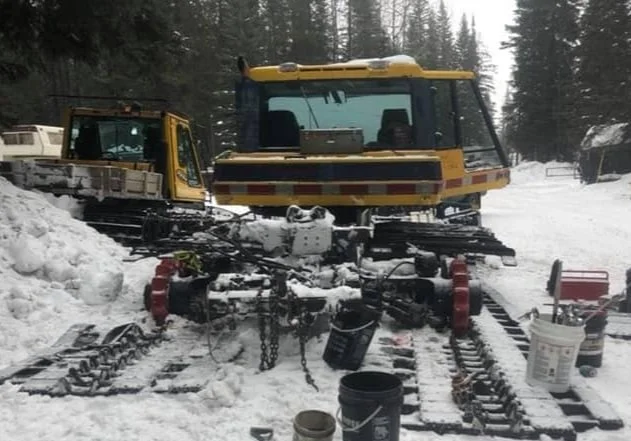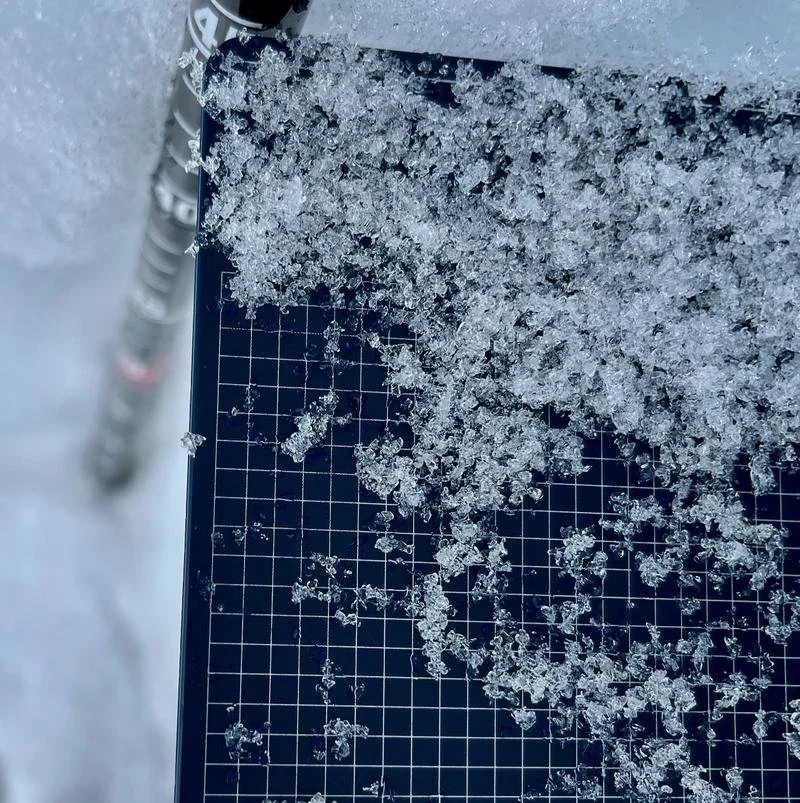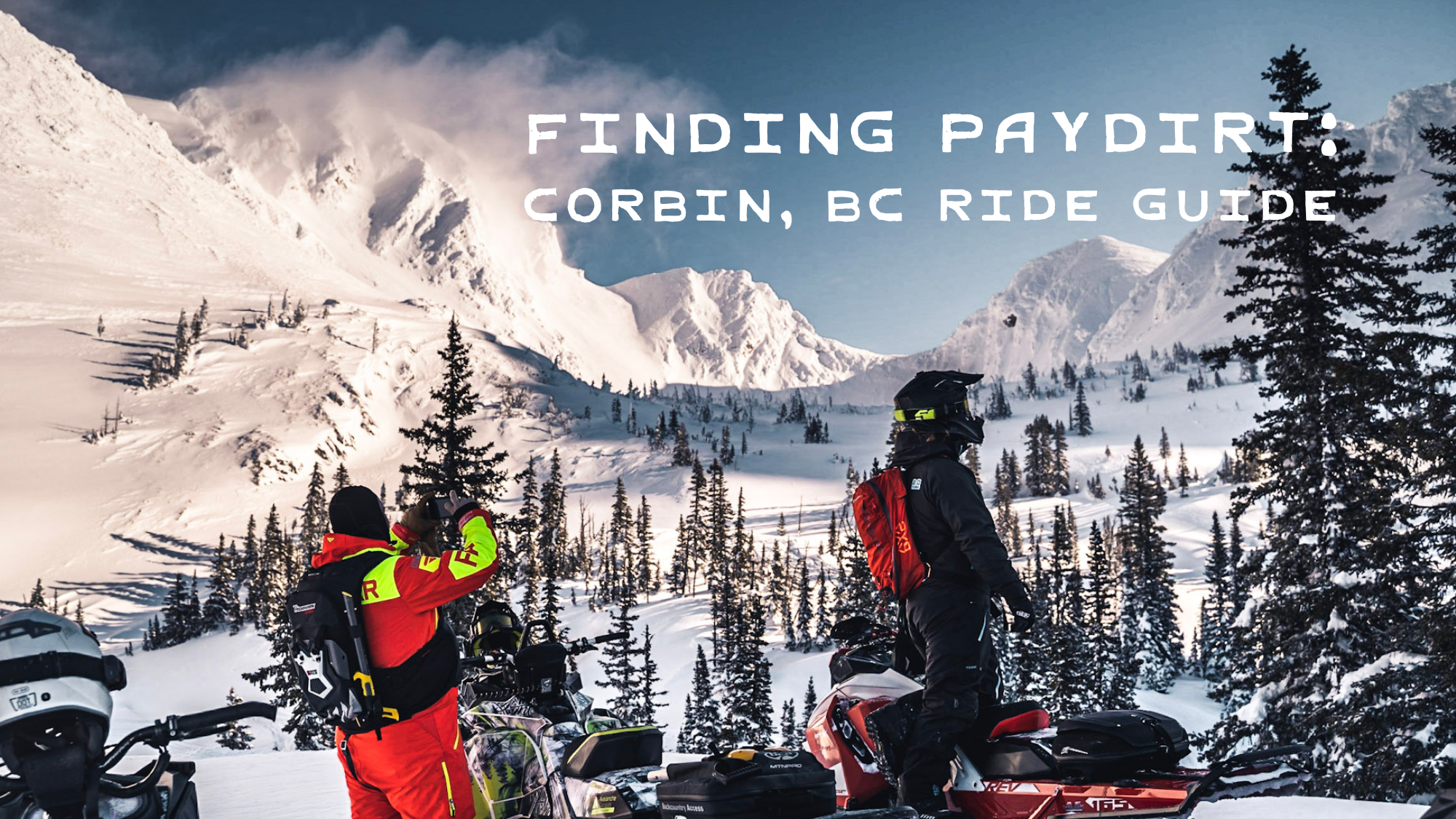MACHINE, MOTHER NATURE & THE ART OF WINTER TRAIL GROOMING
British Columbia is one of the best places to get up close and personal with some seriously deep winter snowfalls. Moisture-laden PACIFIC air masses are driven inland over BC’s 10 major mountain ranges. The massive uplifts cause air to expand, cool, and moisture to condense. The result is precipitation… and lots of it.
The province’s volunteer-driven snowmobile clubs maintain an impressive 18,000km of winter trails. They do this with snow groomers; specialized vehicles that use a combination of tracks, blades, tillers, or drags to manipulate and compact snow into smooth and safe networks for outdoor enthusiasts to enjoy.
At the helm are BC’s real snow experts. Snowcat operators work their magic each night to seamlessly merge mother nature and machine into white ribbons of pure art. They toggle joy sticks, curl the blade, adjust the speed pod and down pressure - constantly adapting to the conditions and terrain. Factors impacting the final trail quality can change dramatically throughout the season and even within a single shift. Here’s how it all works and how riders can help keep trails in tip-top shape.
Fernie Snowmobile Association (FSA) grooming team at work.
EARLY SEASON START UP
With the arrival of about two feet of snow, operators get on the trail to start track packing. Newly fallen snow is driven over with the snowcat, sometimes using a towable weighted implement, called a compactor bar, to compress a dense base critical for trail longevity.
The next step is ‘road building’ or using the blade to fill bridges and low spots drafting preliminary trail shape. Land use partnership agreements will define the total depth of snow or the specific calendar date that grooming operations are allowed to commence and finish. Despite the eagerness that comes with the first snowfalls of the season, it is a time for restraint. Care is given to not disturb underlying soil, rocks, or vegetation or to damage equipment.
WHOOPS
As temperatures cool, snowfalls become more regular and traffic increases on the trails. ‘Whoops’, similar to moguls that form on ski runs, develop as snowmobile tracks kick up snow that builds into waves. The wave piles grow larger with each passing rider and, if not removed by a groomer, can swell so large as to impede safe and enjoyable travel.
Early season road building, FSA
Fresh corduroy grooming contrasted to some whoops on the right of image, FSA
Operators manage the bumps by using the blade on the front of the snowcat to cut down below the ‘root’. Snow is then processed with a rear tiller or drag implement which breaks up the snow via turbulent friction. This mechanical churning of particles simultaneously creates a small but critical amount of heat. The tiller mat or drag pan compacts this slightly moist snow into a smooth trail surface. It is critical that this new snow has time to refreeze for the bonds to ‘sinter’ before being disturbed by riders. The ideal temperatures for grooming are between -10C to -2C for this to happen. Even after the surface has firmed up, it is important that riders use a steady throttle at all times on the trail to preserve the quality and duration of each costly groom.
Cranbrook Snowmobile Association grooming volunteers at work.
DRY SPELLS AND COLD WEATHER IMPACTS ON OPERATIONS
Cold weather starts are hard on equipment and field maintenance is near impossible under extreme weather in the remote backcountry. Snowmobile clubs factor both wind and temperature into safe operating guidelines to reduce risk for equipment and team members. Riders will see this as a pause in grooming, a shift of operations to warmer daylight hours, or reduced km in efforts to keep operators close to home and help, in case of an incident.
Sample Severe Weather Operations Chart, FSA
Field Repairs, FSA
Dry, warm shop, FSA
January brings periods of high-pressure weather - those cold, bluebird sky, dry spells. Operators must be careful during these times to not over-process old snow. The same science that forms facets within the winter snowpack is at play on the trail surface - amplified by the artificial mechanical heating and cooling of the snow. Over-processed crystals do not bond well leaving that ball-bearing feeling under your track. This unconsolidated sugary snow gets pushed around easily into whoops or to the sides of the trail - exposing icy bed surface in high-traffic areas or even thinning the trail coverage overall until new snow can be mixed back in. Riders should use caution on corners and hills as traction will be reduced.
DEEP SNOW
This is BC after all and dry spells do not last long. Snowmobile clubs operating in mountain terrain work under the careful eye of an avalanche professional and avalanche safety plan. Under periods of significant new snowfall or elevated hazard, grooming may be modified or suspended to reduce exposure to staff and equipment working under slide paths.
Deep pow grooming perfection (left), Avalanche debris on Hartley Lake snowmobile trail in Fernie (middle), Debris clean up to restore trail after avalanche hazard subsided (right).
When the big dumps fall, that is when these machines really shine. Despite weights averaging 8500kg, the down pressure under the tracks is only 1.10psi. For reference, the average human footstep exerts 16psi. The weight-to-power ratio makes snowcats the ultimate mountain terrain climbing machine that can turn on a dime. Coupled with a hydrostatic drive system, they are all about delivering efficient torque to the snow.
On a big powder night, when the machines are working hard to push pow, they require more fuel and cover less distance. It is not always a one-and-done kind of grooming shift and can take several passes to knock the air out of newly fallen snow and get down to the root of whoops on a busy section of the trail.
BREAKDOWNS
You’ll know the operator was in a state of flow, with just the right control of the machine and mastery of the conditions when you see that sweet curl of snow rolling off the blade. But it’s not all perfect corduroy and moonlight cruising down the trail listening to Bob Seger. By the time the busy Family Day weekend rolls around, it’s time for fluid and filter changes. It just so happens to also be the unfortunate time mechanical gremlins seem to show up. Despite solid preseason and regular maintenance schedules, unexpected breakdowns do happen on these complex machines.
A little grace goes a long way. Remember, your trail dollars cover a lot more than that particular days groom. You can bet the club is more disappointed about a downed snowcat than you could ever be. Somewhere out there a volunteer is away from their own family to tackle repairs on their personal day off while you are still out there enjoying an awesome, albeit a little bumpier, day on the snow.
SPRING CYCLES
Spring diurnal melt-freeze cycles create challenging grooming conditions for even the most skilled operators. Clubs toggle shift times to find the sweet spot of night when temperatures are cool and dry enough the snow can be manipulated but not too cold to end up with a frozen sheet of ice or ‘coral reef’ snow. Timing is everything.
Spring Slurpee snow is hard to get traction in and equipment sinks. Steep climbs become almost impossible and steep downhills, well, they get a little exciting for the operators too. The wet snow sticks to grooming equipment and balls up off the blade and rear implements resulting in a less precise trail surface or frozen ‘cookies’ left behind.
Dry snow curling off the blade, FSA
Wet spring snow sticking to the blade, FSA
It can be hard on even the most seasoned operator’s ego to not be laying down the perfect trails they aim for during slushy conditions. This is the time of year where the best riding starts later in the day as trails soften up and become more forgiving.
TIPS FOR HAPPY TRAILS
Grooming can take place at any time. Expect equipment on trail day and night.
Avoid riding or stay to the side on fresh grooming until it has time to set up (about 4 hours)
Make eye contact with the operator before passing. If possible, wait until they pull over or wave you through.
Maintain a steady throttle on the grooming.
Trail grooming is an expensive endeavor. Snowcats cost between $50-$450k and annual maintenance bills can push up to $60k each year. A typical ten hour grooming shift costs between $900-$1500 if you factor in general maintenance, insurance, fuel, operator compensation. Support your sport by purchasing a trail pass or annual membership where you ride.
Those incredible office views, Fernie Snowmobile Association
Nicole Matei is a rider, writer, backcountry safety educator, recreation manager… and pinch hitter snowcat operator. You can find her supporting BC Snowmobile Clubs as the BCSF Program and Marketing Manager or in one of her other roles advocating for motorized recreation opportunities in Fernie, BC.
You can read more articles about grooming operations by Nicole in Mountain Sledder Magazine:

























